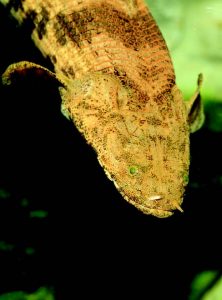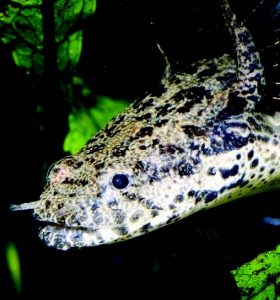Quite recently, Bichirs have become a popular fish among Filipino fishkeepers. Bichirs are elongated fishes belonging to the genera Polypterus and Erpetoichthys, the latter being represented by its only species, the Erpetoichthys calabaricus, commonly called Ropefish or Reedfish.
The Bichir craze is alive in the country: Filipino fishkeepers are eagerly talking about this fish in discussion groups, fish clubs, and just about any social fish organization, both locally and internationally. One common topic is the comparison between Upper Jaw and Lower Jaw Bichirs — what’s the difference?
Just about Jaws

In Upper Jaw Bichir species, the upper jaw protrudes past the lower jaw, and the reverse is true among lower jaw variants.
This description of Upper Jaw and Lower jaw Bichir is not found in studies. You might never read about their differences in any scientific journal. This classification, made by Bichir keepers, has been internationally accepted and institutionalized in the hobby. It is, in essence, merely a fishkeeper’s concept and not really an exact science, unlike when scientific journals noted the number of dorsal finlets to describe Bichir species.
Sizing it Up
While it is quite obvious among Lower Jaw Bichirs that indeed their lower jaws protrude past the upper and are bigger in size, the same may not be said convincingly about the Upper Jaw Bichirs.
I personally believe the upper and lower jaws appear the same length among Upper Jaw Bichirs. I am convinced that the upper jaw is only very slightly longer than the lower jaw among Upper Jaw Bichirs at the most, or maybe I should have my eyes checked.
Does Size Really Matter?
The classification between the Upper Jaw and Lower Jaw Bichirs is not a big thing. This is something that Bichir keepers enjoy in pursuit of the hobby.
Some keepers collect Upper Jaw Bichirs in one tank, and keep only Lower Jaw Bichirs in another. Other keepers would not even care and keep both variants in one tank, so long as the sizes are compatible.
Does it matter? Not really, but knowing the difference between the two is something that’s nice to know, especially among Bichir keepers.
Genius Giants
Another difference lies in their overall size. Although this is true only 80 percent of the time, it is a practical differentiation that could be helpful to fishkeepers.
Upper Jaw Bichirs are generally smaller than the Lower Jaw Bichirs. The latter are the giants, growing 24 inches or more, probably the biggest among the genus Polypterus.
Most Upper Jaw Bichirs generally grow about 12 to 14 inches, with P. ornatipinnis reaching 24 inches, P. teugelsi maxing out at 22 inches, and P. weeksii a little less. The longest Upper Jaw Bichir is the E. calabaricus, which is said to reach 36 inches in length but is really a very slender fish.
If you collect big fishes, go for Lower Jaw Bichirs.
The best way to differentiate between the Upper and Lower Jaw Bichirs is to memorize them.
This is by no means an easy task because of the number of Polypterus species in existence. The lone E. calabaricus is a standalone species, so it is easy to take to memory as an Upper Jaw Bichir. But the Bichirs from the Polypterus genus are harder to recall because there are 15 described species and a host of undescribed ones.
However, I have devised a simple system for this. Ever noticed that as a kid it was quite easy to count in multiples of five? Whether playing hide and seek or reciting in Math class, counting by 5s was easy: 5, 10, 15, 20, 25…
To classify which among the described Bichirs under the genus Polypterus belong to the Upper or Lower Jaw variety, simply rely on the first three multiples 5, 10, and 15. There are 5 Lower Jaw Bichirs, 10 Upper Jaw Bichirs and 15 Described Bichirs.
Once again, don’t forget the E. calabaricus under the Erpetoichthys genus, which is an Upper Jaw Bichir.
This appeared in Animal Scene magazine’s September 2018 issue.







